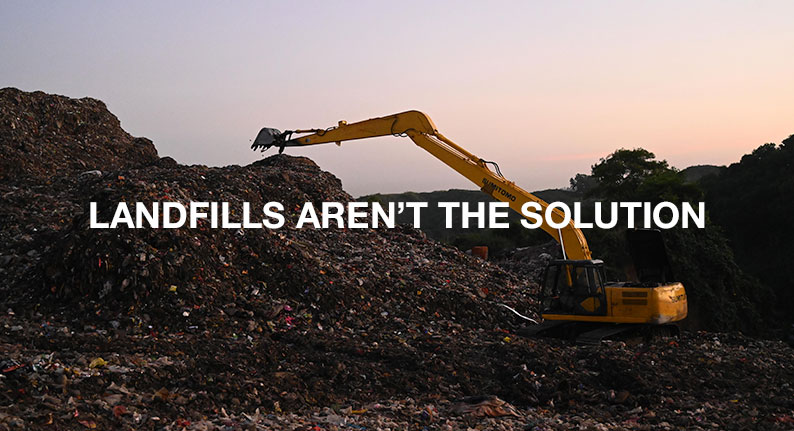Why Landfills Aren’t The Solution – Case Study
27 Apr, 2020 7:20 AM / by Quek Leng Chuang

Why Landfills Can Never be the Sustainable Solution for Waste Management
Many countries and businesses still rely on the linear approach: First, they mine metals or crude oil in faraway countries, then they process them and sell them to businesses and consumers for use. After use, those products end up on the landfill and the cycle starts with new materials. Logically seen, this means that landfills grow bigger and bigger. This however has vast environmental, social and economic consequences in the short as well as in the long run. We revealed infamous examples of landfills around the globe and researched on the problems that they cause.
Triangolo della Morte, Naples, Italy
This region in the northeast of Naples is not a landfill per se. Driving through the countryside, you will only find small amounts of textile and electrical waste which is deposited in between vegetable fields. However, the most dangerous waste is buried deeply inside the ground, polluting the soil and agricultural products grown there. Various kinds of hazardous and toxic waste – e.g pharmaceutical and radioactive waste are buried in this region of Italy. More than 6500 fires were registered by the prefecture Caserta in order to burn the waste during the last 1,5 years (2013). This is why this area is also called “land of fires” by Italians.
The Mafia was responsible for this illegal landfill. There is evidence that from the 1970s on, waste was imported from Germany and brought to Italy in order to be buried there. A former Mafia boss, Carmine Schiavone, revealed this in 1997. His former Mafia friends betrayed him to the police when he tried to stop them to continue burying waste in the region. Then, Schiavone revealed the dirtiest crimes of the Mafia: He accused the organisation of burying millions of tons of radioactive and highly toxic waste in the regions.. Through these operations, the Mafia earned remarkable amounts of money from European countries.
This impacted the region heavily: Cancer rates soared by 50%, asthma and problems with the thyroid also became much more frequently in the region. Even children as young as 18 months die due to aggressive forms of cancer.
Burning of waste causes higher percentages of dioxin in the air further damaging people’s health. Even though measurements indicated that the soil in the region is too polluted, people still live there and eat the vegetables from their land, formerly fertile and known as the “vegetable garden” of Italy. Farmers sell their vegetables in and outside Italy as if there was nothing wrong with it: An Italian journalist revealed that a farmer from the region sold his tomato harvest for 8 cent per kilogram – it was processed to passata and then exported to other European countries. People are aware of the danger, but there are no regular controls to monitor the amount of hazardous substances contained in fruits and vegetables from the region.
Citizens from the region heavily demonstrated against the government, that did not act despite they knew about the activities of the Mafia in the region. In 2014, newspapers report that the environmental authorities now search for the hazardous waste and try to remove it – however, this will be a long and costly process.
Surroundings of Moscow, Russia
Around Moscow, there are several landfills causing problems for the local population.
One of them is the Yadrovo landfill near Wolokolamsk, where people suffered nausea, dizziness and related symptoms of poisoning when 2018 toxic gases escaped from the landfill. Residents also report bad sulphur smell, probably coming from hazardous waste that chemical factories deposit here.
Several other cities have the same problem, for example Kolomna, Tarusa, Klin, Tutschkowo, Woskresenks und Naro-Fominsk. According to activists from the region, local waste mafia organisations make profits out of cheap and inappropriate waste disposal.
The landfills, characterised by the use of outdated technology and insufficient security measures, should be closed down soon at least in Wolokolamsk according to local authorities. Activists however reveal that the government only tries to calm down protests and will not act as it does not want to lose the possibility for cheap waste disposal. Many people are also afraid to speak up as they fear the conflict with authorities.
The problem here is that even though Russia produces high amounts of waste of all kinds, there is no functioning recycling system. Poor people in the surroundings of Moscow suffer the consequences.
Ghazipur, India
The area covered by municipal and hazardous waste is as large as 43 football pitches in 2014, growing to 40 in 2019. It is situated in the eastern part of New Delhi. The landfill was opened in 1984 and reached its capacity in 2002 already. It already reached an height of 65 metres, growing further as an incredible amount of 2200 tons of waste arrives there every day by truck.
This landfill causes various problems: Firstly, as it is an open landfill, considerable amounts of methane escape into the atmosphere, fuelling climate change. Moreover, toxic substances from the landfill leak into local channels that then contribute to a pollution of local waterways. As the landfill is still in the city area and freely accessible, it even caused two deaths in 2018 when heavy rainfalls lead to the collapse of a sectionl. The air quality index in the region stays at unhealthy levels constantly, usually ranging around 300 on the air quality index – which is, however, not specially caused by the landfill. Air pollution in whole New Delhi has reached extreme levels during the last decades. Even though, an incineration plant near the landfill makes the problem worse by adding hazardous byproducts to the polluted air people breathe there.
Habitants suffer respiratory illnesses and a bad state of health in general, as doctors reveal. Also, the smell of garbage makes breathing “virtually impossible” according to people living there. As three million people live ten kilometres around the landfill, also the Indian government has to take the issue seriously.
The Prime ministers office started to search for solutions in summer 2019 already, but so far there are no signs of improvement of the situations seen.
The problem here is similar to the one in Russia: High amounts of waste and an non-existent recycling system fill up the landfill at higher rates every day.
Bantar Gebang, Jakarta, Indonesia
Bantar Gebang grew rapidly during the last years. Covering more than 160 football pitches in 2014 already it is one of the biggest landfills in Asia. It showcases environmental problems and a malfunctioning waste management system in Jakarta and is expected to be at full capacity in only one year from now. The landfill, consisting mainly of municipal waste, is some 40 metres high already. Currently, 900 trucks bring 5000 tons of waste everyday to this landfill issuing 25 000 tons of methane per year as the landfill is under plein air! On this landfill, workers employed by the city try to separate recyclables, however, they struggle to fight against the immense amounts of waste coming in every day. 40% of the city’s waste stems from plastic bags according to Isnawa, Jakarta Environment Agency Head.
To solve the problems, officials plan to construct five new incinerators. However, this will only aggravate air quality problems in Jakarta and its surroundings. Reduction of municipal waste and the installation of proper waste separation procedures are more sustainable means to tackle the problem.
Xinfeng landfill, Guangzhou, China
Around 8000 tons of waste every day enter this 917 000 sq metre landfill in China. The landfill was constructed with a budget of 100 millions and is also sealed in order to protect soil and waterways from contamination. Moreover, incinerators are situated at this landfill to generate energy from waste. The landfill handles 75% of the waste produced in Guangzhou city and is the second largest in China.
Apart from this, there is not much information found about this landfill in China. Probably this is linked to the plans of China’s government to abandon landfills and to raise recycling rate to 35% by 2020. Still, there are no official statistics about China’s overall recycling rate and the current amount of waste recycled.
What About Singapore?
We only have one landfill in Singapore at Pulau Semakau that is slated to be completely full by 2035. This is absolutely not sustainable. As a consequence, Singapore has embarked on a Zero Waste Masterplan, looking to reduce the annual landfill by 30%. Learn more about Singapore by clicking here. At Environmental Solutions (Asia), we always look towards giving waste a second life, saving it from incineration and thereby disposal to the landfill.
Join in the Fight Against Incineration/Disposal
If your company has waste that you want to put through true recycling as opposed to incineration or disposal to our precious landfill, look no further and get in touch with us today via or call +65 6653 2299 today.
Topics: Catalytic Converters, Corporate Social Responsbility, Environmental Offset, Metal Waste, Packaging Waste, Reimagining Sustainability, Sustainability in Singapore, Wood Waste
Written by Quek Leng Chuang
LengChuang is a chemical engineer and an expert in carbonomics. He is the founder and owner of Environmental Solutions (Asia) Pte Ltd.
